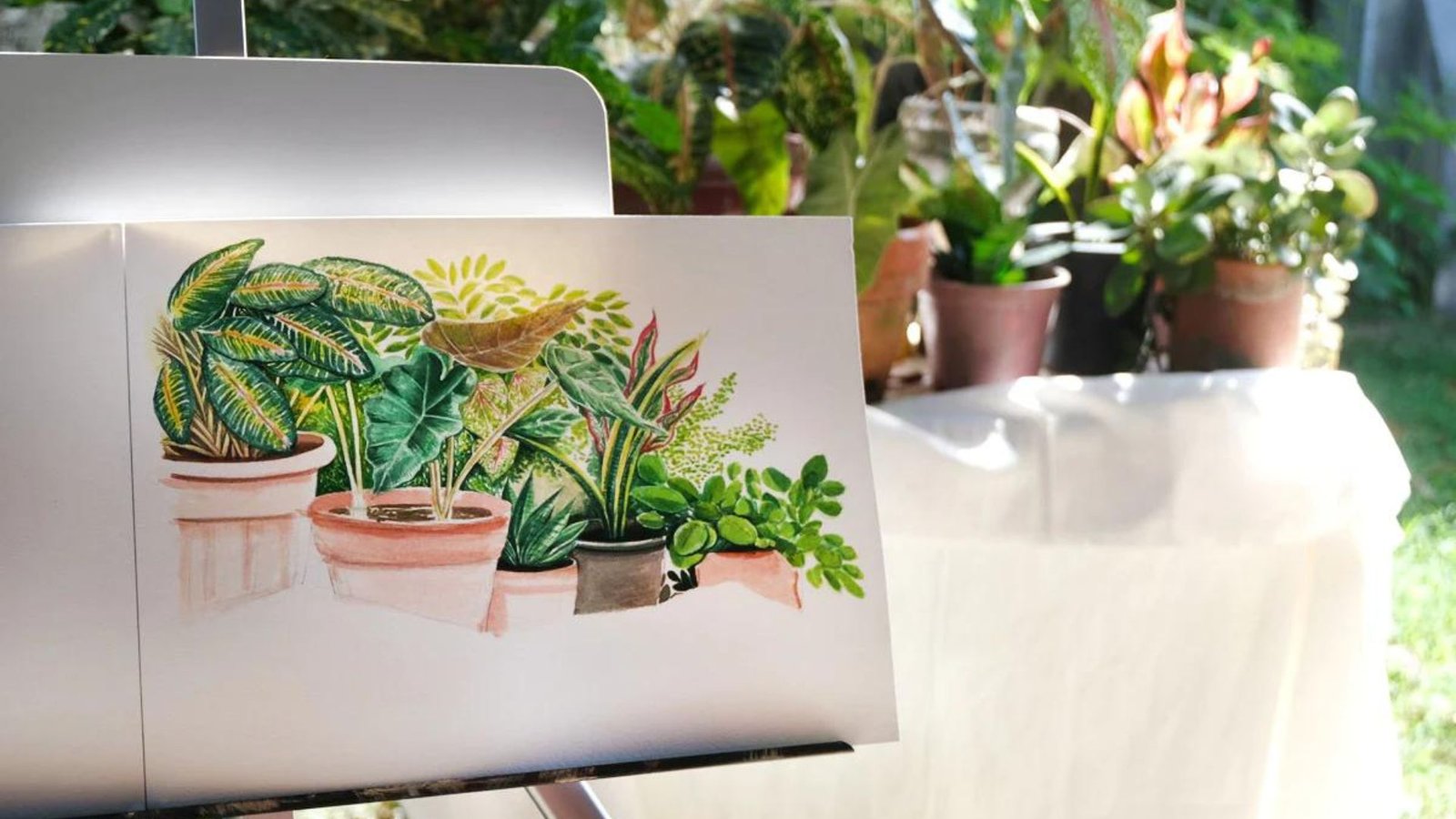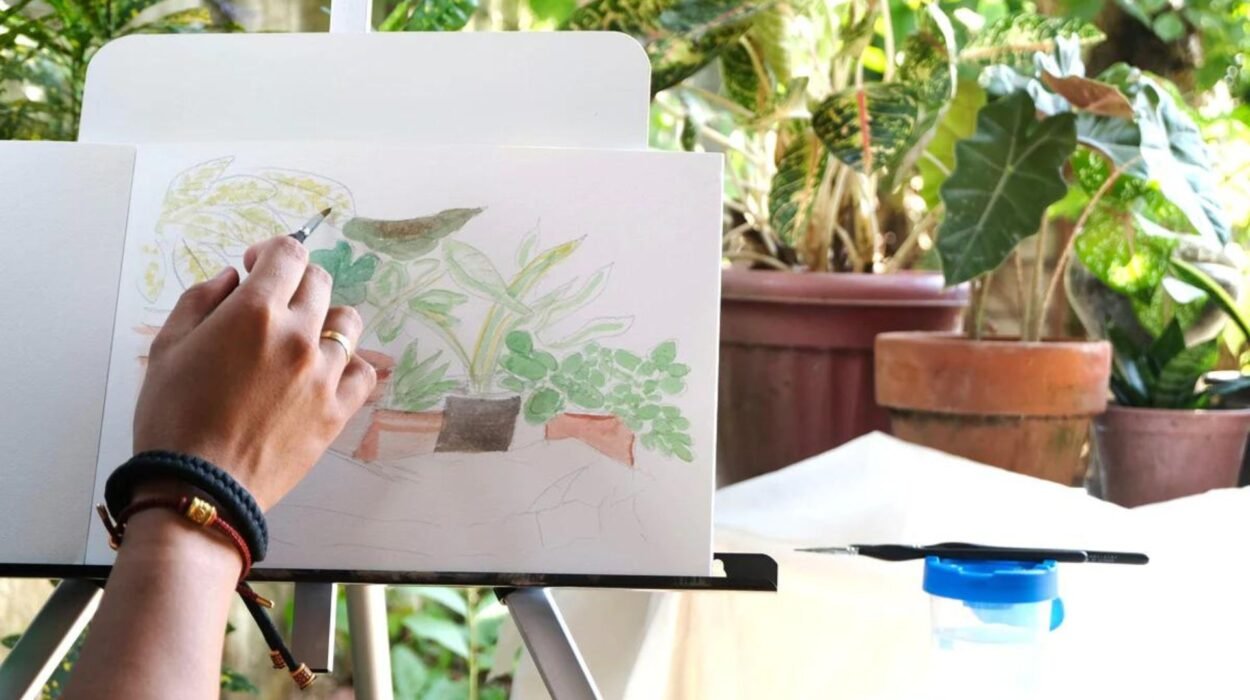|
Getting your Trinity Audio player ready...
|
Nature is a wonderful source of inspiration for artists. In this article, we’ll explore simple and creative ways to bring the beauty of nature into your art, whether you’re a painter, sculptor, or mixed media artist.

Exploring Nature’s Shapes and Textures
One great way to incorporate nature into your art is by exploring its different shapes and textures.
Nature offers a lot of interesting shapes and textures, like the patterns on leaves or the rough bark of trees. Take inspiration from these details and try to include them in your artwork. Use different materials and techniques to capture the beauty of nature in your creations.
Pro Tip: Collect leaves, flowers, and other natural objects to use as references for your artwork.
Using Natural Materials in Your Art
Another way to add nature to your art is by using natural materials as part of your work. You can use things like twigs, feathers, shells, or dried flowers in your paintings, sculptures, or collages. These materials can give your artwork a unique texture and make it feel more connected to the natural world. Experiment with different ways to incorporate these natural elements into your art.
Pro Tip: Seal natural materials with varnish or resin to protect them and keep them looking good.
Drawing Inspiration from Landscapes
Natural landscapes are also a great source of inspiration for artists. Go outside and paint or draw what you see, whether it’s a park, a forest, or a beach. Pay attention to the colours and shapes you see in nature, and try to capture them in your artwork. You can use sketches or photographs as references for your paintings.
Pro Tip: Experiment with different compositions and perspectives to create interesting artwork inspired by nature.
Using Natural Colors
Nature has a lot of beautiful colours that you can use in your artwork. Look at the colours you see in flowers, leaves, and the sky, and try to recreate them in your paintings. Mix different colors to get the shades you want, and use them to bring your artwork to life.
Pro Tip: Use contrasting colours to make your artwork more interesting, like mixing warm oranges with cool blues.
Infusing Symbolism and Allegory
In addition, consider infusing your artwork with symbolism and allegory inspired by nature’s motifs and metaphors.
Nature has long been a rich source of symbolism and allegory in art, representing concepts such as growth, renewal, and resilience. Incorporate symbolic elements like flowers, animals, or landscapes into your artwork to convey deeper meanings and narratives. Explore how these natural symbols can resonate with viewers on a profound and universal level, transcending language and culture.
Pro Tip: Research the symbolic meanings of different elements in nature to enrich the storytelling aspect of your artwork.
Celebrating Biodiversity and Ecosystems
Let’s begin by celebrating the rich diversity of life found in nature’s ecosystems. Nature is teeming with a variety of plants, animals, and landscapes, each contributing to the intricate web of life on our planet. Explore the unique characteristics of different ecosystems, from lush rainforests to arid deserts, and incorporate elements that showcase the beauty and importance of biodiversity. Use vibrant colours and playful compositions to capture the vitality and interconnectedness of life in your artwork.
Celebrating Nature’s Diversity
Let’s start by celebrating the variety of life found in nature. Nature is full of different plants, animals, and landscapes. Explore these diverse elements and use them in your art. Use bright colors and interesting shapes to show the liveliness and connection of life in your artwork.
Pro Tip: Learn about different ecosystems and endangered species to inspire your art and raise awareness.
Embracing Nature’s Beauty
Embrace the natural shapes and textures found in creation. Nature has its unique shapes and textures, like the curves of tree branches or the patterns on leaves. Use these natural shapes and textures in your art to add character. Try using different materials and methods to make your art look and feel more natural.
Pro Tip: Look closely at nature for inspiration. Even small details like the veins on a leaf can make a big impact on your art.
Exploring Nature’s Relationships
Explore the connections between different parts of nature. Use your art to show these relationships in action. Tell stories with your art to highlight the balance and harmony of nature.
Pro Tip: Spend time observing nature to understand the relationships between different plants and animals.
Reflecting on the Changing Seasons
Think about how nature changes over time. Nature is always changing, with different seasons bringing new colours and textures. Use your art to capture these changes. Try using techniques like time-lapse painting or layering to show the passage of time in your art.
Pro Tip: Use natural materials like leaves or flowers in your art to add an extra layer of authenticity.
Conclusion
In conclusion, adding nature to your artwork is a great way to make it more interesting and beautiful. Whether you’re using natural materials, drawing inspiration from landscapes, or just using natural colours, there are lots of ways to incorporate creation into your art. So go outside, explore, and let nature inspire your creativity!
You may find this information useful:

